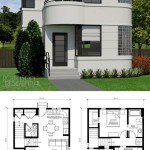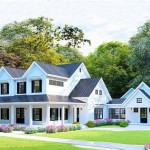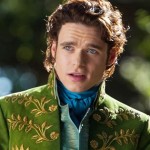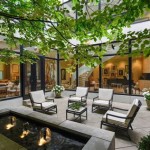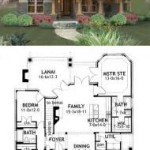Town House Floor Plans are detailed blueprints that outline the layout and construction specifications of a multi-level dwelling typically found in urban areas. They provide a comprehensive view of the house’s room configuration, spatial relationships, and architectural elements. For instance, a typical town house floor plan might include a lower level with a garage, storage area, and utility room, a main level featuring a living room, dining room, and kitchen, and an upper level with bedrooms and bathrooms.
Understanding and interpreting town house floor plans is essential for various stakeholders involved in the design, construction, and sale of these properties. Architects use these plans to visualize and communicate their designs. Contractors rely on them to estimate materials and labor costs and ensure the house meets building codes. Real estate agents utilize floor plans to showcase the property’s layout and amenities to potential buyers.
In the following sections, we will delve into the specifics of town house floor plans, exploring their components, symbols, and the advantages of using them in the planning and construction process.
To effectively plan and construct a town house, it’s essential to consider the following key aspects of its floor plan:
- Room Layout
- Spatial Relationships
- Architectural Elements
- Structural Components
- Building Codes
- Material Specifications
- Construction Techniques
- Energy Efficiency
- Functionality
- Aesthetics
Understanding and incorporating these elements into the floor plan ensures the town house meets the needs of its occupants and complies with industry standards.
Room Layout
The room layout of a town house floor plan refers to the arrangement and organization of the different rooms within the house. It’s a crucial aspect that determines the functionality, flow, and overall livability of the space.
- Open Floor Plan: An open floor plan eliminates walls between the living room, dining room, and kitchen, creating a spacious and interconnected area. This layout promotes a sense of openness and allows for easy movement and interaction between occupants.
- Closed Floor Plan: In a closed floor plan, each room is separated by walls, providing more privacy and defined spaces. This layout is often preferred for families who value quiet and separation between different activities.
- Split-Level Floor Plan: A split-level floor plan features different levels connected by stairs. This layout can create a sense of separation and privacy while maximizing space utilization. It’s commonly used to accommodate sloping lots or to create distinct living areas.
- Multi-Story Floor Plan: A multi-story floor plan has multiple levels stacked vertically. This layout is ideal for narrow or compact lots and allows for more rooms and living space within a limited footprint.
When designing the room layout of a town house, architects consider factors such as the number of occupants, their lifestyle, privacy requirements, and the overall desired ambiance of the home.
Spatial Relationships
In town house floor plans, spatial relationships refer to the way different rooms and spaces are connected and interact with each other. Understanding and optimizing these relationships is crucial for creating a functional and cohesive living environment.
- Adjacency: Adjacency describes the placement of rooms that are directly connected to each other. For example, a kitchen may be adjacent to a dining room, allowing for easy serving of meals. Careful planning of adjacency can enhance the flow and convenience of the floor plan.
- Connectivity: Connectivity refers to the overall flow and movement within the town house. It involves considering how different rooms and spaces are linked together and how occupants can move seamlessly between them. A well-connected floor plan promotes accessibility and reduces feelings of isolation.
- Separation: Separation is the intentional placement of rooms or spaces to create privacy and reduce noise transmission. For example, bedrooms may be separated from living areas to ensure a quiet and restful environment. Effective separation can contribute to the overall comfort and well-being of the occupants.
- Hierarchy: Hierarchy in spatial relationships refers to the designation of primary and secondary spaces within the floor plan. For instance, a living room may be designed as the primary gathering space, while a den or study serves as a secondary, more private space. Establishing a clear hierarchy can enhance the overall organization and functionality of the town house.
Optimizing spatial relationships in town house floor plans requires careful consideration of the occupants’ needs, lifestyle, and desired ambiance. By thoughtfully connecting, separating, and prioritizing different spaces, architects can create town houses that are not only visually appealing but also highly functional and comfortable to live in.
Architectural Elements
In town house floor plans, architectural elements play a vital role in defining the overall character, functionality, and aesthetic appeal of the living space. These elements encompass a wide range of design features that contribute to the unique identity of a town house.
- Windows and Doors: Windows and doors are not just openings for light and access; they are also architectural elements that influence the overall ambiance of a town house. Their placement, size, and style can impact natural light penetration, ventilation, and the connection between indoor and outdoor spaces.
- Staircases: Staircases are a defining feature in multi-level town houses. They can serve as sculptural elements that add visual interest and architectural drama to the interior. The design of staircases, including their shape, material, and placement, can significantly impact the flow and functionality of the floor plan.
- Fireplaces and Mantles: Fireplaces and mantles are not only sources of warmth and ambiance but also prominent architectural elements in town houses. They can become focal points of living areas, adding character and a sense of coziness to the space. The design and style of fireplaces and mantles can vary widely, from traditional to contemporary, complementing the overall aesthetic of the town house.
- Built-In Features: Built-in features such as bookshelves, cabinets, and seating can enhance the functionality and aesthetic appeal of town house floor plans. They provide additional storage space, display opportunities, and comfortable seating arrangements. These built-in elements can be customized to suit the specific needs and tastes of the occupants, adding a personal touch to the living space.
The thoughtful incorporation of architectural elements in town house floor plans is essential for creating visually stunning and functional living environments. By carefully considering the placement, style, and scale of these elements, architects can design town houses that are both aesthetically pleasing and highly livable.
Structural Components
In town house floor plans, structural components form the backbone of the building, ensuring stability, safety, and durability. These components work together to distribute loads, resist external forces, and maintain the integrity of the structure.
- Foundation: The foundation is the base of the town house, providing support and anchoring it to the ground. It can be a concrete slab, crawlspace, or basement, depending on factors such as soil conditions and building codes.
- Framing: The framing consists of a network of beams, joists, and studs that form the skeleton of the town house. It provides structural support for walls, floors, and the roof. Framing materials commonly include wood, steel, or concrete.
- Walls: Walls are vertical structures that enclose the town house and divide it into different rooms and spaces. They provide privacy, security, and support for the roof and floors. Walls can be constructed from various materials, including wood, brick, concrete, or drywall.
- Floors: Floors are horizontal surfaces that separate different levels of the town house and provide support for occupants and furnishings. They can be made of wood, concrete, or a combination of materials, and may incorporate insulation for temperature control and soundproofing.
Understanding and considering structural components during the planning and designs of town house floor plans is crucial for ensuring the safety and longevity of the building. Architects and engineers collaborate to determine the appropriate structural systems and materials based on factors such as the size and shape of the town house, local building codes, and seismic or weather-related considerations.
Building Codes
Building codes are a set of regulations and standards established to ensure the safety, structural integrity, and habitability of buildings. They provide guidelines for the design, construction, and maintenance of town houses and other types of buildings.
- Zoning Codes: Zoning codes regulate the use of land and buildings within a specific area. They determine where town houses can be built, their permitted height and density, and the types of activities allowed within the zoning district.
- Building Codes: Building codes focus on the structural safety and construction standards of town houses. They specify requirements for foundations, framing, walls, floors, and other structural components to ensure the building can withstand various loads and forces.
- Fire Codes: Fire codes aim to prevent and mitigate the spread of fire within town houses. They regulate the use of fire-resistant materials, installation of smoke detectors and sprinkler systems, and the design of escape routes.
- Energy Codes: Energy codes promote energy efficiency in town houses by setting standards for insulation, windows, lighting, and appliances. They aim to reduce energy consumption and minimize the environmental impact of the building.
Adhering to building codes is essential for obtaining building permits and ensuring the safety and habitability of town houses. Architects and builders must carefully review and comply with these regulations throughout the design and construction process.
Material Specifications
In town house floor plans, material specifications outline the specific materials to be used in the construction of various building components. These specifications ensure that the town house meets the required standards for durability, safety, and aesthetics.
- Exterior Walls: Exterior walls are the primary barrier between the interior and exterior of the town house. Common materials for exterior walls include brick, stone, wood, vinyl siding, and stucco. The choice of material depends on factors such as durability, weather resistance, and architectural style.
- Roofing: The roofing system protects the town house from the elements. Roofing materials typically include asphalt shingles, metal panels, tile, or slate. The choice of roofing material is influenced by factors such as slope, weather conditions, and desired aesthetics.
- Windows and Doors: Windows and doors provide natural light, ventilation, and access to the outdoors. They are available in a wide range of materials, including wood, vinyl, aluminum, and fiberglass. The choice of material affects factors such as durability, energy efficiency, and maintenance requirements.
- Flooring: Flooring materials cover the floors of the town house and provide a comfortable walking surface. Common flooring materials include hardwood, carpet, tile, and laminate. The choice of flooring material depends on factors such as durability, ease of maintenance, and desired aesthetics.
Material specifications are crucial for ensuring the quality and performance of a town house. Architects and builders carefully select materials that meet the specific requirements of the project while considering factors such as cost, availability, and sustainability.
Construction Techniques
Construction techniques play a vital role in translating town house floor plans into livable spaces. These techniques encompass various methods and materials used to build and assemble the different components of a town house.
- Framing: Framing refers to the skeletal structure of the town house, typically constructed using wood, steel, or concrete. The choice of framing material depends on factors such as the size and complexity of the structure, seismic requirements, and cost considerations.
- Exterior Cladding: Exterior cladding covers the exterior walls of the town house, providing protection from the elements and contributing to its architectural style. Common cladding materials include brick, stone, vinyl siding, and stucco, each with its own advantages and aesthetic qualities.
- Roofing: The roofing system protects the town house from rain, snow, and other weather conditions. Roofing materials vary widely, including asphalt shingles, metal panels, tile, and slate, offering different levels of durability, energy efficiency, and aesthetic appeal.
- Interior Finishes: Interior finishes encompass the materials and techniques used to create the interior surfaces of the town house, including flooring, wall coverings, and ceiling treatments. These finishes impact the overall ambiance and functionality of the living space, allowing for customization based on personal preferences and design styles.
Understanding and employing appropriate construction techniques are crucial for ensuring the structural integrity, durability, and aesthetic appeal of town houses. Architects and builders must carefully consider factors such as material properties, climate conditions, and building codes to determine the most suitable techniques for each project.
Energy Efficiency
In town house floor plans, energy efficiency measures play a crucial role in reducing energy consumption, lowering utility bills, and promoting environmental sustainability. By incorporating energy-efficient design strategies, architects and builders can create town houses that minimize energy waste and provide comfortable living spaces.
- Building Envelope: The building envelope refers to the exterior components of the town house that separate the conditioned interior from the outdoor environment. Optimizing the building envelope involves using materials and construction techniques that reduce heat transfer, air infiltration, and thermal bridging. This can include using insulated walls and roofs, high-performance windows and doors, and minimizing thermal bridges through proper sealing and detailing.
- Heating and Cooling Systems: Heating and cooling systems account for a significant portion of energy consumption in town houses. Energy-efficient systems include high-efficiency furnaces, heat pumps, and air conditioners with variable speed compressors and programmable thermostats. These systems minimize energy use by operating at optimal levels and reducing energy loss.
- Lighting and Appliances: Lighting and appliances also contribute to energy consumption in town houses. Energy-efficient lighting options include LED and CFL bulbs, which use significantly less energy than traditional incandescent bulbs. Energy Star-rated appliances, such as refrigerators, dishwashers, and washing machines, are designed to minimize energy use while maintaining performance.
- Renewable Energy Sources: Incorporating renewable energy sources into town house floor plans can further reduce energy consumption and environmental impact. Solar panels, for example, can generate electricity from sunlight, while geothermal heat pumps can provide heating and cooling using the Earth’s natural temperature. These renewable energy systems can supplement or even replace traditional energy sources, leading to significant energy savings and reduced carbon emissions.
By considering energy efficiency in town house floor plans, architects and builders can create sustainable and cost-effective living environments that minimize energy consumption and promote environmental responsibility.
Functionality
Functionality in town house floor plans refers to the efficient and practical use of space to meet the needs and lifestyles of occupants. It involves carefully considering the arrangement of rooms, the flow of traffic, and the placement of fixtures and fittings to create a comfortable, livable, and efficient home.
One key aspect of functional floor plans is the efficient use of space. This means maximizing the usable area of the town house while minimizing wasted space. Architects achieve this by carefully planning the layout of rooms, avoiding unnecessary hallways and corridors, and incorporating built-in storage solutions to keep clutter at bay.
Another important aspect of functionality is the flow of traffic. Well-designed floor plans allow for smooth and efficient movement throughout the town house. This involves positioning rooms in a logical sequence, ensuring wide enough doorways and hallways, and avoiding bottlenecks or dead-end spaces. By optimizing the flow of traffic, occupants can move around the house comfortably and easily.
Finally, the placement of fixtures and fittings plays a crucial role in functionality. Architects carefully consider the location of windows and doors to maximize natural light and ventilation. Kitchens are designed with efficient work triangles, placing the sink, refrigerator, and stove in close proximity for ease of use. Bathrooms are planned to provide privacy and convenience, with fixtures and fittings arranged for optimal functionality.
By prioritizing functionality in town house floor plans, architects create living spaces that are not only visually appealing but also highly practical and comfortable for occupants. Functional floor plans enhance the overall livability and enjoyment of the home.
Aesthetics
Aesthetics play a vital role in town house floor plans, influencing the overall visual appeal, ambiance, and enjoyment of the living space. Architects carefully consider various aesthetic elements to create town houses that are not only functional but also visually stunning.
- Architectural Style: The architectural style of a town house sets the tone for its overall aesthetic. From traditional Victorian to modern contemporary, different architectural styles offer unique characteristics, such as distinctive rooflines, window shapes, and exterior cladding materials. Architects work closely with clients to determine the desired architectural style that aligns with their personal preferences and the surrounding neighborhood.
- Exterior Design: The exterior design of a town house is crucial in creating a visually appealing streetscape. Architects use a combination of materials, colors, and textures to enhance the facade. They carefully consider the placement of windows, doors, and balconies to create a balanced and harmonious composition. Landscaping and outdoor spaces are also integrated into the design to complement the exterior aesthetic.
- Interior Design: Interior design involves the selection of finishes, furnishings, and decor to create a cohesive and inviting living space. Architects collaborate with interior designers to develop a design scheme that reflects the client’s taste and lifestyle. This includes choosing color palettes, flooring materials, lighting fixtures, and furniture arrangements to create a comfortable and aesthetically pleasing environment.
- Natural Light: Natural light plays a significant role in the aesthetics of a town house. Architects design floor plans that maximize natural light penetration, creating bright and airy living spaces. They strategically place windows and skylights to capture daylight and reduce the need for artificial lighting. Natural light not only enhances the visual appeal but also contributes to the well-being of occupants.
By carefully considering aesthetic elements in town house floor plans, architects create living spaces that are visually appealing, comfortable, and reflective of the occupants’ personalities and aspirations. Aesthetics contribute to the overall enjoyment and quality of life within the town house.










Related Posts

